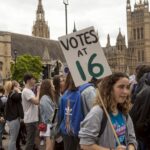Introduction: A Historic Census Shift Ignites Political Heat
In a landmark political development, the central government has officially approved the inclusion of caste-based data in the next population census—a move not undertaken in India since 1931. While the announcement has been framed as a step toward greater social equity and data-driven policymaking, it has also triggered a fierce political face-off. The ruling Bharatiya Janata Party (BJP) and the opposition Congress party are now locked in a heated contest over who deserves credit for the shift.
With caste remaining a pivotal axis of India’s socio-political structure, the timing, execution, and implications of this policy decision are monumental. As political parties race to stake their claims, the caste census has quickly evolved from a bureaucratic decision into a full-blown political flashpoint.
Government Announcement: A New Chapter in Census Policy
The central government’s decision to include caste in the upcoming census was made public through an official Cabinet Committee announcement. Union Ministers described the move as a “significant leap toward social justice,” emphasizing that accurate caste data will help design better welfare schemes and policies targeting backward communities.
Although the previous attempt at a caste-based data exercise came in the form of the 2011 Socio-Economic and Caste Census (SECC), its findings were never officially released due to concerns over data accuracy and classification errors. This time, officials claim the caste data will be collected in a more standardized, scientific, and transparent manner, giving it legitimacy as part of the decadal population census.
Congress: “It’s Our Vision, They Copied It”
Congress leaders were quick to react, presenting the government’s decision as a political U-turn inspired by their persistent advocacy. Rahul Gandhi declared the move a “victory for the people of India,” asserting that Congress had long demanded a caste census in order to expose the real face of inequality in the country.
“We forced them to take this decision. They mocked the idea when we proposed it, but today they’re adopting it because they can no longer ignore the demand,” Gandhi said at a press interaction shortly after the announcement.
He emphasized the need for a specific timeline, urging the government to act transparently and swiftly. Other Congress figures echoed the sentiment, saying the BJP is merely following the path that the Congress paved with its campaign for a nationwide caste census.
BJP’s Counterattack: “Congress Always Evaded This”
The BJP, however, has not ceded any political ground. Responding sharply to Congress’s credit claims, the BJP leadership accused the opposition party of historical hypocrisy. Union ministers reminded the public that during UPA rule, the Congress government had shied away from conducting a proper caste census, instead opting for a socio-economic survey with limited credibility.
“The Congress had every opportunity when they were in power, yet they ducked this issue. Now they want to take credit because we’re correcting their historic blunder,” a senior BJP leader remarked.
The BJP has positioned this decision as a continuation of its broader agenda for inclusive development and upliftment of the OBC and marginalized communities. By pushing ahead with the census, the party claims it is demonstrating political will and administrative capability that Congress never showed when in power.
The Political Calculus: Strategic Move or Social Mission?
Beyond the claims and counterclaims, political analysts view the caste census decision as a shrewdly timed move with immense electoral implications. In recent years, calls for caste enumeration have grown louder, particularly in states like Bihar, Uttar Pradesh, and Maharashtra—where caste arithmetic often defines political fortunes.
The move could help the BJP regain or consolidate its OBC voter base, which the Congress and regional parties have been trying to woo aggressively. Moreover, with upcoming state elections and the 2026 general elections not far off, the caste census could become a defining issue.
Analysts believe this policy has the potential to upend the current reservation framework, trigger reclassification of caste categories, and alter socio-economic policy models. It could also serve as a potent tool to craft new political narratives centered on empowerment and inclusion.
The Historical Backdrop: Why the Caste Census Matters
India last conducted a full-fledged caste census in 1931, during the British colonial era. Since then, while data on Scheduled Castes (SC) and Scheduled Tribes (ST) have been routinely collected, the vast and diverse population of Other Backward Classes (OBCs) remains officially unquantified.
The 2011 SECC tried to fill this gap but failed due to data inconsistencies and lack of political consensus on its use. The absence of reliable caste data has often hampered the implementation and evaluation of reservation policies, leading to calls from social justice activists and political leaders alike for a more scientific and government-recognized caste census.
The need for such data has only intensified in recent years, as demands for better-targeted welfare and fair representation in education, employment, and political spaces grow louder across the country.
Voices from the Ground: Mixed Reactions Among the Public
Reactions among the general public and civil society have been mixed. Many welcome the decision, seeing it as long overdue. Social justice advocates believe it will provide empirical backing for equitable distribution of resources, reservations, and representation.
Others, however, worry about the possible misuse of data. Some fear it could deepen caste divisions, be weaponized for political gain, or spark inter-community tensions.
Dalit and OBC organizations have largely supported the initiative, viewing it as an acknowledgment of their long-standing struggle for visibility and recognition in government policy. However, their support remains cautious—demanding transparency in data collection, classification, and eventual policy formulation.
State-Level Movements: The Bihar Precedent
The immediate catalyst for this nationwide caste census push can arguably be traced to Bihar. In 2023, the Nitish Kumar-led Bihar government conducted its own caste survey. Despite initial resistance from the Centre, the Bihar model was widely praised by various parties, including Congress and regional outfits.
The Bihar survey revealed that OBCs and EBCs together made up over 63% of the state’s population. These numbers significantly altered political discourse, with demands for increased quotas and policy revision gaining momentum.
Bihar’s initiative triggered similar movements in other states like Tamil Nadu, Odisha, and Maharashtra, forcing the Centre to respond and eventually announce its own national-level caste enumeration. The influence of state-level initiatives cannot be overstated in shaping the Centre’s decision.
Legal, Bureaucratic, and Policy Implications
The implementation of a caste census brings with it a complex set of legal and administrative challenges. Enumerating caste identities in a country as socially intricate as India poses significant risks of misclassification, duplication, or manipulation.
Government officials have indicated that updated technology, digital tools, and cross-verification techniques will be used to ensure data accuracy. However, bureaucrats also acknowledge the enormity of the task—from ensuring respondent trust, to dealing with fluid caste identities and managing political sensitivities.
Legal experts are also keeping an eye on how the data will be used. There are concerns that constitutional provisions regarding reservations and equality may be tested or reinterpreted based on the findings. The Supreme Court has previously emphasized the need for empirical data to justify reservation policies—making this census all the more critical.
The Road Ahead: What to Expect
As preparations begin, key questions remain. Will the data be made public in full? How will it influence the existing 50% cap on reservations set by the Supreme Court? Will it lead to restructuring of caste-based quotas or give rise to new demands?
The central government has yet to publish a detailed roadmap. However, insiders suggest that groundwork for digital census infrastructure is already underway. Enumerators are likely to receive additional training, and a fresh questionnaire will be framed to capture caste identities comprehensively.
The political consequences are also hard to predict. As parties recalibrate their strategies and messaging based on new caste data, India’s electoral map could shift significantly—either empowering the marginalized or entrenching vote bank politics even further.
Conclusion: A Census That Could Change India
The decision to conduct a caste census is more than just a bureaucratic tweak to data-gathering methods—it’s a transformative move that touches the core of India’s identity, inequality, and democracy. While the political tug-of-war between BJP and Congress is unlikely to fade anytime soon, what truly matters is how this historic decision is implemented, interpreted, and translated into meaningful policy.
If done right, the caste census could be a tool for empowerment and fairness. If mishandled, it could deepen societal divides and become yet another pawn in India’s charged political chessboard.
The coming years will reveal whether this bold move becomes a milestone in India’s journey toward social justice—or just another contested statistic in a politically driven narrative.





